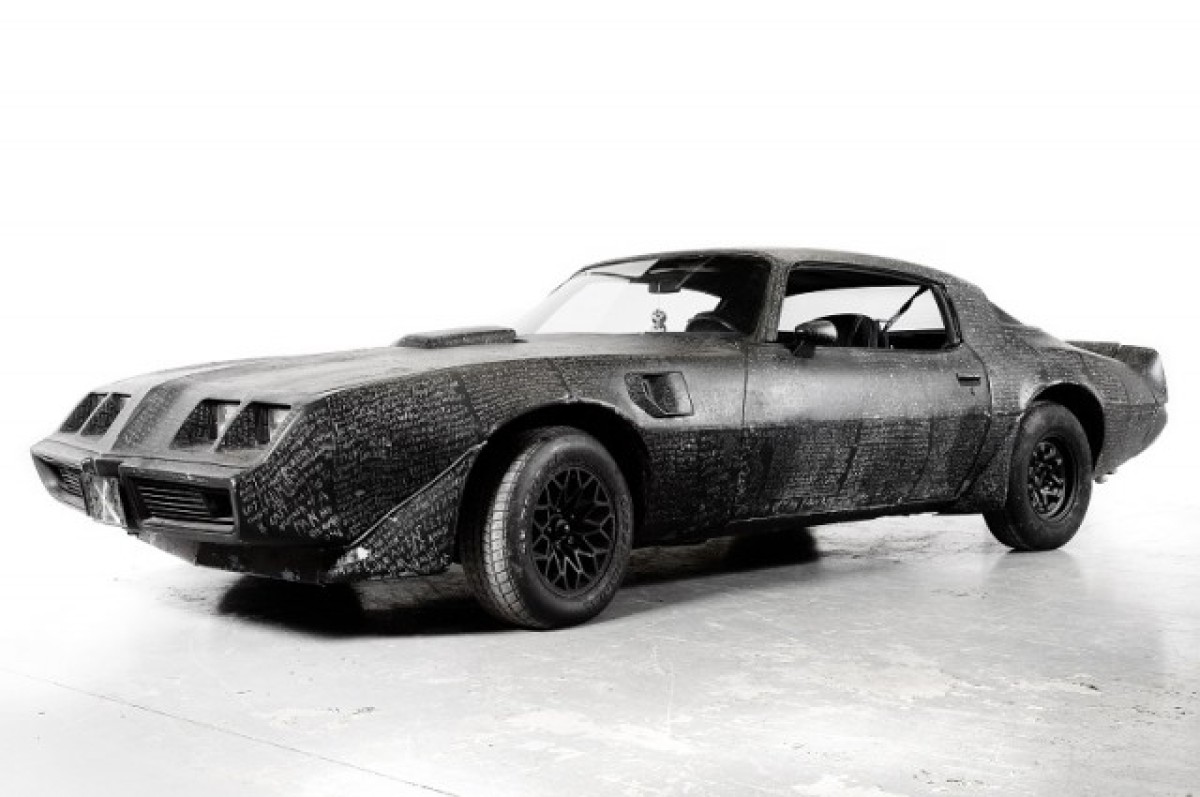You may not see it on the Gallery floor all the time, but we're the proud keepers of John Scott's 3,300lb. doomsday vehicle: the Trans Am Apocalypse No. 3. The artwork will be on loan to the Art Gallery of Hamilton for the exhibition Fearful Symmetry: The Art of John Scott, February 6 to May 15, 2016, marking the third venue for the touring exhibition of Scott’s work (after stops at the McMaster Museum of Art and Faulconer Gallery, Grinnell, Iowa). AGO Conservator Sherry Phillips shares her thoughts on getting the Trans Am ready for its latest reveal.
My daily work schedule is typically filled with projects established by exhibition and loan deadlines. Every so often, however, a project that I’ve always wanted to tackle happens to coincide with a request from another museum. The conservation of John Scott's Trans Am Apocalypse No. 3 is one of those projects.

The artwork, which came into the AGO collection as a gift from a private collector, takes its inspiration from the apocalyptic prophecies in New Testament; the entire text from the Book of Revelation of St. John the Divine has been cut into the painted surface of the car. It’s an atypical art conservation project for me and that’s one of the reasons I was looking forward to it. Our version is one of two remaining apocalyptic Trans Am cars created by John Scott (version 1 was scrapped; version 2 is in the collection of the National Gallery of Canada). We are fortunate that Scott is a keen and active participant in the restoration project. Another key contributor in the project is my colleague John Williams, AGO collections care specialist, who happens to be a licensed mechanic.

A full size car transformed through the application of an exterior coat of house paint and hand-incised text over the entire surface presents a number of challenges. We began by determining the original function or significance of each layer or component. Our approach strives to be re-treatable or reversible, if necessary in the future, and we try to use commercially available, environmentally and user “safer” materials.

Essentially, the Trans Am is a 35-year-old well-used car with all the associated issues that come with aging and exposure to the extremes of a Canadian climate. Its size alone means that storage and installation locations are limited. Missing interior details need to be found and returned to the car to help realize Scott’s original intent. We were all delighted when unproductive Google and swap-meet searches surprisingly ended with discoveries literally close to home: a perfectly worn black Gideon Bible on a bookshelf, originally picked up at auction by my mother, and a pair of appropriate vintage rear deck speakers collecting dust in my father’s garage now fill the empty speaker holes in the Trans Am.
Our preservation plan incorporates practical and necessary auto-mechanic approaches (like the replacement of old tires) and fine art conservation techniques (paint layer consolidation, and eventually, fills and in-painting to restore lost textual details). And as we're immediately working to restore mobility and remain true the work's original concept, we're also having numerous discussions about the future expectations for the materials, their appearance, and purpose within the overall installation.

I’m grateful for the enthusiastic support of Greg Manuel (Nicholas Metivier Gallery), and AGO and AGH colleagues who have helped facilitate the continuation of the conservation project on site in Hamilton. Stop by to see the show, and one week of conservation-on-display in the AGH gallery space, beginning February 22.
—Sherry Phillips

